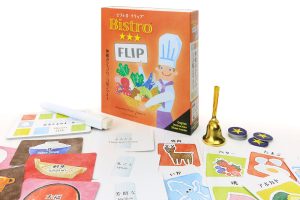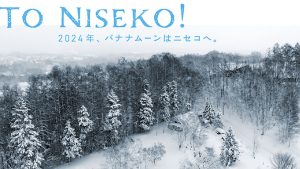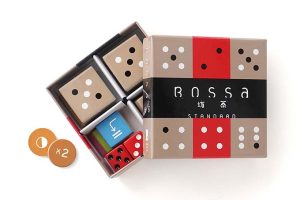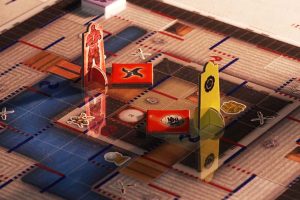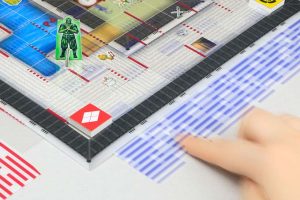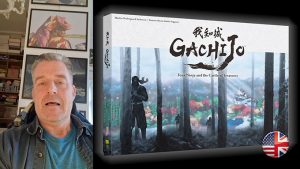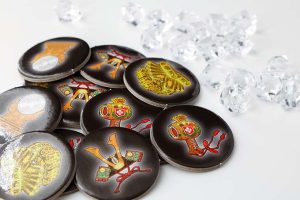::
GACHIJO - Four Ninja and the Castle of Treasures: Episode 3
Written by Hiroshi Maeda, GACHIJO team leader
:::
Hi Ninjas! I am Hiroshi Maeda, GACHIJO team leader.
Today, I would like to write about the main features of GACHIJO - Four Ninja and the Castle of Treasures, which is launching its crowdfunding campaign in the near future: a physical moving maze.
:::
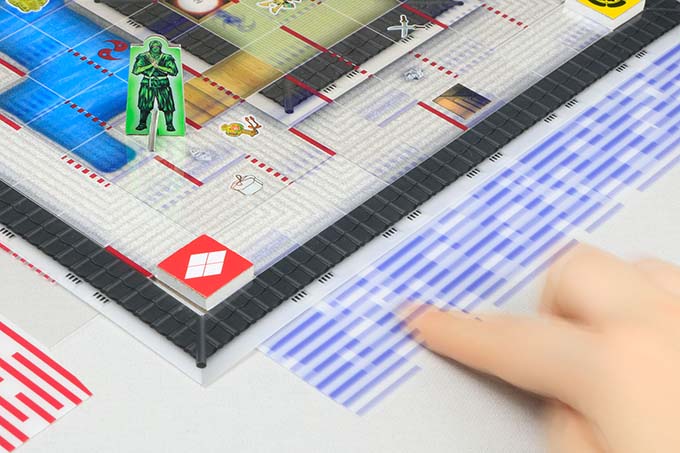
:::
The Innovation of the Moving Game Board
GACHIJO - Four Ninja and the Castle of Treasures is a treasure quest game in which you use your wits and ninja skills to gather mysterious treasures in a moving maze castle. In the process, various game-like things can occur, but I'll leave those for another time. ‘What is unique about moving?’ you might ask. This game has something special, not only do the player’s pieces move, it’s also a physical moving board.
:::
The player’s characters remain in the same position!
Co-designer Martin Nedergaard Andersen and I wanted to create something unique. Martin already had one idea that the board moves under the pieces while the player’s character remains in the same position. There have been games with moving boards in the past, but often these involved the board and pieces moving together, as we came up with GACHIJO, we thought this is really something special.
Seeing is believing; take a look at this 10 second video.
:::
Control the Maze Walls and create paths for the ninja!
:::
On each player’s turn, they must combine ‘moving their ninja’ and ‘sliding the maze walls’ to create new pathways for them to access treasures and various items. If the maze were a fixed maze, you might give up or have to backtrack when you reach a dead end. However, in the legendary castle, the player controls the Maze Walls with their ninjitsu. Which means even if you reach a dead end you can open up a new path and new possibilities.
:::
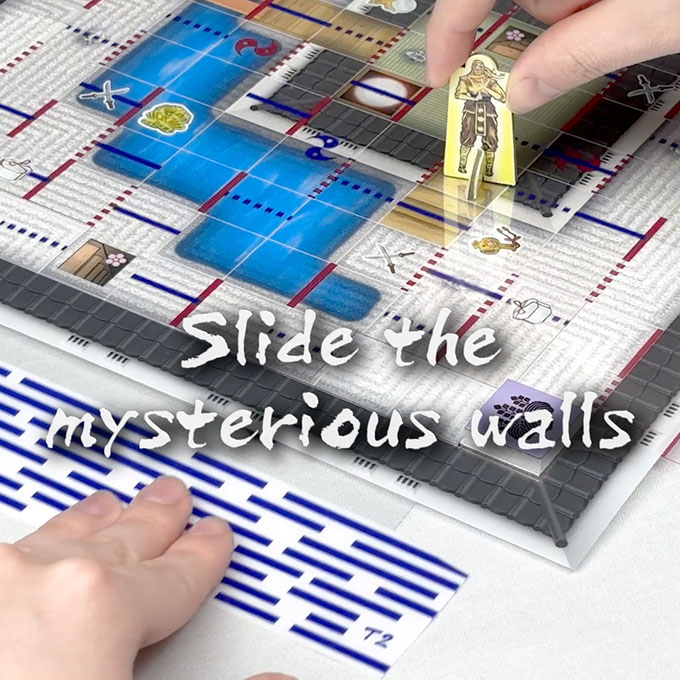
:::
Have fun moving and collecting items!
The mission of each player's ninja is to collect the required treasures and items before anyone else and return to the base. You can have fun moving your ninja and sliding the maze walls a lot to collect many items. It is such a fun game. You want to move around efficiently and make your opponents take their time, so one of your strategies is to end your turn with a maze arrangement that prevents the next player from moving easily.
:::
The basic design took two years.
This moving maze is made up of multiple layers. The top layer does not move, but the two layers below it (the red walls layer and the blue walls layer) slide. With this design only the walls of the maze move, while the position of the ninja piece remains unchanged.
As a basic mechanism, it is not too complicated, but I must confess that in the early stages of development, we were a bit naive, thinking that it would be much easier to make. However, it took us two years of trial and error for the basic design. Then it took us a whole year for play-testing, which is an extraordinary amount of time.

The following is a summary of what we tried and tested multiple times: the number of spaces on the board (we started with 9x9 and finally settled on 11x11), the number of transparent layers (we tried up to 6 layers and finally settled on 3), the number and complexity of the walls in the maze (too many walls would make it frustrating to move only a few cells, too few would bring the game to an end too quickly), the design of the base stage layer (there are various themes/motifs, including the layout of obstacles other than walls, with the deluxe version having up to 9* different types). If we modified any of them, other elements would need to be adjusted as well, which is why it took a long time for trial and error.
*If all stretch goals are unlocked through crowdfunding
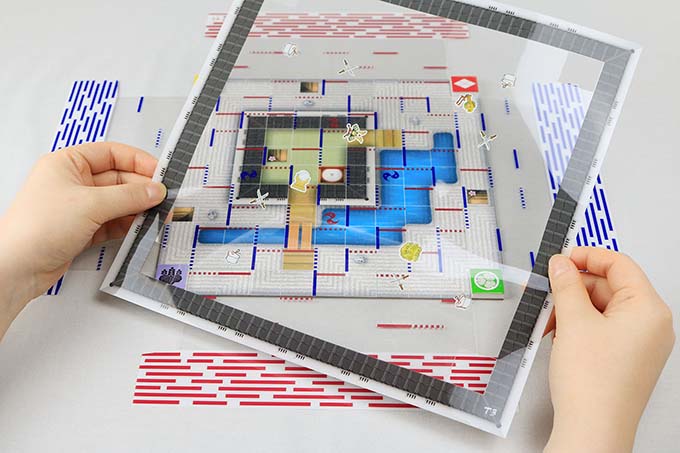
The game rules currently available for preview are draft version 7.01E. This means that there have been as many major changes in the basic design as there were in that revised version. We, the creative team, can say with confidence that it is a well thought-out game.
We hope we can share this game with the world. If you are interested, please support us on Kickstarter.
:::
Thank you everyone for reading and watching!
GACHIJO Team Leader Hiroshi Maeda
:::
To get the launch information for GACHIJO - Four Ninja and the Castle of Treasures, subscribe to our newsletter!
Banana Moon Games newsletter subscribers will be notified when GACHIJO launches.
Subscribe now! → Google Form
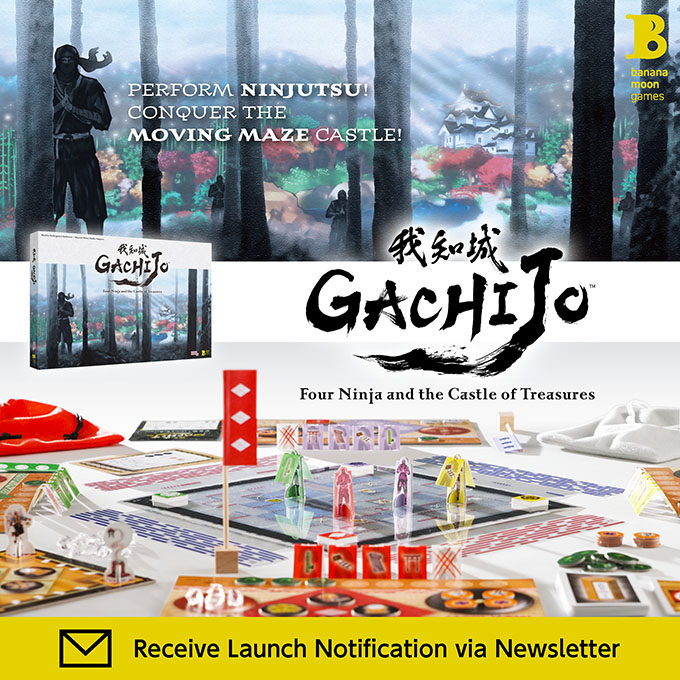
:::
Martin Nedergaard Andersen is a Danish game designer who has published +250 different games around the world. His first work was published in 2007. Outside of inventing games, Martin immerses himself into the world of travel 4-7 months of the year and is also a writer and photographer documenting his travels. The original design of ‘Gachijo’ was developed in collaboration with the team from Banana Moon Studio Sapporo.
Banana Moon Studio Sapporo is an innovation and creative design company led by Hiroshi Maeda who has won many awards in Japan. They are based in Hokkaido, the northernmost part of Japan, and 2020 marked their 30 year anniversary since the company was founded. They started making games in 2019 and publishing games under the brand name Banana Moon Games. They have created 15 game titles, and have run a few successful Kickstarter campaigns including the beautiful 2 player game made by local paper artisans in Japan, “Bossa” and “Bossa 2023”.
